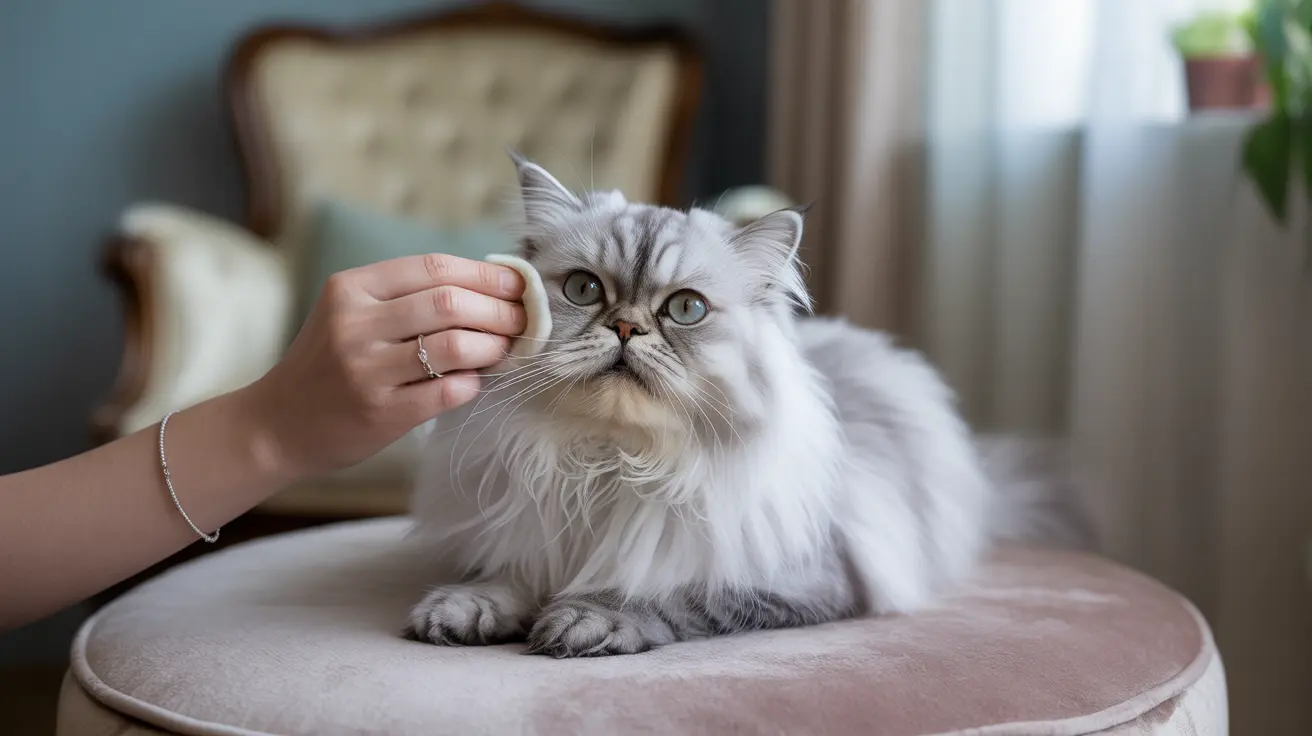Understanding Cat Tear Ducts and Their Function
Cats have a complex tear drainage system that helps maintain proper eye health. Tears normally flow from the eye through tiny openings called puncta, then travel through the nasolacrimal duct to drain into the nose. When this system becomes blocked, tears overflow onto the face instead of draining normally.
Common Causes of Blocked Tear Ducts in Cats
Several factors can contribute to tear duct blockages in cats:
Infections and Inflammation
- Feline herpesvirus infections
- Bacterial or fungal infections
- Severe conjunctivitis
Anatomical Issues
- Breed-specific facial structure (especially in flat-faced cats)
- Congenital defects
- Abnormal eyelash growth
Physical Obstructions
- Foreign bodies
- Accumulated discharge
- Tumors or growths
Signs Your Cat Has a Blocked Tear Duct
Watch for these common symptoms:
- Constant wetness beneath the eyes
- Reddish-brown staining of the fur
- Skin irritation or inflammation
- Crusty discharge around the eyes
- Mild swelling around the eye area
Diagnosis Process
Veterinarians use several methods to diagnose blocked tear ducts:
- Fluorescein dye testing
- Physical examination of the eye and surrounding structures
- Diagnostic imaging in complex cases
- Bacterial cultures when infection is suspected
Treatment Options and Solutions
Treatment approaches vary depending on the underlying cause:
Conservative Management
- Warm compresses
- Regular cleaning of the affected area
- Topical medications
Medical Interventions
- Antibiotic or antiviral medications
- Anti-inflammatory treatments
- Duct flushing procedures
Surgical Options
- Surgical correction of anatomical abnormalities
- Tumor removal when necessary
- Duct reconstruction in severe cases
Prevention and Long-term Care
While not all cases of blocked tear ducts are preventable, these steps can help:
- Regular eye cleaning and maintenance
- Prompt attention to eye infections
- Regular veterinary check-ups
- Special care for at-risk breeds
Frequently Asked Questions
What causes blocked tear ducts in cats, and which breeds are most at risk?
Blocked tear ducts in cats can be caused by infections, anatomical issues, or physical obstructions. Flat-faced breeds like Persians and Himalayans are most at risk due to their facial structure.
How can I tell if my cat has a blocked tear duct or just excess tearing?
A blocked tear duct typically causes constant wetness under the eyes, often with reddish-brown staining. Your veterinarian can perform specific tests to confirm the diagnosis.
What treatments are available to clear a blocked tear duct in cats?
Treatments range from conservative management with warm compresses and cleaning to medical interventions like duct flushing and, in some cases, surgery.
Can blocked tear ducts in cats lead to infections or other complications?
Yes, untreated blocked tear ducts can lead to skin infections, chronic irritation, and in rare cases, more serious eye problems.
How do veterinarians diagnose a blocked tear duct in a cat?
Veterinarians typically use fluorescein dye testing, physical examination, and sometimes imaging studies to diagnose blocked tear ducts.
Conclusion
While a blocked tear duct in cats can be concerning, understanding the condition and seeking appropriate veterinary care can help manage the problem effectively. Regular monitoring and maintenance can prevent complications and ensure your cat's comfort and well-being.






